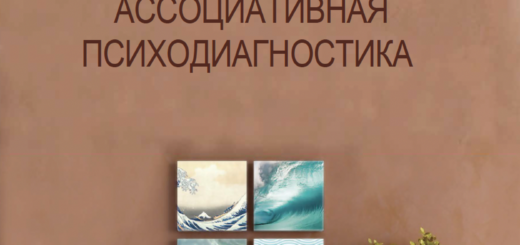The analysis of the image of “Nativity story” based on the theory of associative socionics was held in the Facebook group of Socionic community 12/19/18. In this post I will cite extracts from the comments of participants who have made a valuable contribution to the analysis of this image:

On the threshold of the Nativity of Christ, I propose to share associations on this picture. What aspects of information and what type of energy does this image emit?
OK. – The energy of calm, peace.
E.K. – Seen care, humility and acceptance. And also serving the highest idea, but this is probably obvious.
A. D. I think there is some kind of correctness of energy here, self-restraint. And at the same time emotions. Something like Ni, Ti, Fe. Something from EIE / LSI / IEI.
O. T. – You said so well about correctness and self-restraint. Your reasoning can be viewed from the perspective of my concept. Сorrectness is associated with the logic. Ti indicates the leading type of superego energy. LSI is one of the 4 Superego- types. Logic is expressed in strict form, geometrically correct lines. There are no ethics of emotions here, but introverted ethics, Fi. Eyes lowered to the child. He is precious for the parents and not because he was born for a high mission. Every child is invaluable for parents. They look with care and love. Mother gives warmth and protection, father carries light. It is possible that the lantern in the hands of the father symbolizes that Jesus’s mission to illuminate this world and point the way to God the Father.
O. T. – I advise everyone to start evaluation of non-verbal images (picture, music) with more general features. And only then go to the functions. When entering the functions, also do not consider all 8 functions at once, but start from 4x functions of Young and move towards the type. Although we must remember that the picture is not a person and not a type and it is not always possible / necessary to get a type as the result of diagnostics of the image. But what is really needed in the assessment is the consistency of your judgment.
What criteria are we talking about here?
– Extraverted or introverted energy in the picture. Poses are either open or closed, how much space is occupied, colours, open facial expressions or with a tilt and turn, etc. Look at the article, do not be lazy, repetition – the mother of learning! Once you have found two basic dichotomies, you know the type of energy and the group of types. You also know the leading functions of this energy. And then you begin to weigh – which is more, what energy function is leading or compensating. This is the right way to approach it.
R. M. – For me, so some kind of slavish obedience in the image invested. And emphasized symbolism. More sadness than peace. Rational introverted ethics a lot. Intuition and sensory little.
A. Sh. – Well, yes …sort of surrendered with giblets … not right!
O. T. – Oh, how funny, surrendered with giblets, then? 😄
A. Sh. – Well, yes … there is something doomed in the image.
O. T. – R.M. is very insightful. 😉 Noted slavish obedience. This quality can be viewed from the perspective of two energies. In the Superego – this is total submission to a higher power. No doubt. It comes from Ti as the acceptance of a certain givenness for the truth. You have accepted for yourself what is God, and it remains to follow what is prescribed and not to surrender to the devil the tempter. And for this you need purity and rigidity of thoughts. In the energy of Superid, too, there is obedience only rather not to God as a higher power, but to circumstances. Superid energy teaches to adapt to different environmental conditions. Submission is also an act of survival in critical circumstances. It may be that R. under slavish obedience meant that circumstances do not always require a person to be submissive, that this is not entirely correct from the standpoint of Superid-types …. not a flexible adjustment. Whereas for Superego-types, this means total obedience, which does not depend on changing circumstances.
O. S. – Lilies talk about cleanliness. These are royal lilies. That is the greatness of the royal family there. Lilies adorn the royal coat of arms of the French House. Three golden lilies on a blue background. Joseph, Mary and the Baby Jesus – the Holy Family in anticipation … And lilies mean bees flying and collecting honey.
The petals are the wings, and the pistil is the belly of the bee. But a three-petal lily can turn into a cross. And there is sacrifice in majesty. On the lamp – the cross. Through His death on the Cross, we are saved.
O.T. – There is sacrifice in majesty. How well said. But this is a conscious sacrifice for the sake of a high mission. People tend to look for their mission in life. And this distinguishes the Superego Group as a willingness to serve the Truth. And truth includes the correctness of relationships (logic) and relations between people (ethics). At the level of ideas, ideal objective relationships and subjective relations.
What else seems to be important to note that there is a contradiction in the picture and there is also a hidden meaning. R. noticed slavish obedience, and O. pointed to the royal lilies in seemingly very modest and inconspicuous robes. How does this characterize the holy family and superego energy? The superego energy and superego types have their own values, not quadral. Modesty makes a person more attractive; all is not gold that glitters; beauty in severity and spirituality; beauty (spiritual) will save the world.
Gold embroidery with a pattern of lilies can be attributed to sensory, as a symbol of status, authority and wealth. Everything should be beautiful in a person ideally – both body and soul – a holistic image! Flowers, winding lines of the pattern – I would refer to ethics. They do not outweigh and overshadow the logic, because the strict classical form restrains and organizes the pattern.
Gold patterns on clothes can be associated with tongues of flame, with fire. You can think about the flame of a candle or you can think about the sacrificial fire. The symbol of fire adds an element of dynamics to a static image and then you can talk about additional, subtype energy. And this is most likely Superid, because the image is clearly introverted. Fire is a symbol of purification, including spiritual (as well as water, by the way). Stars and a lantern indicate that the child was born at night, but this can also be associated with falling snow. Night and winter. I have already mentioned that the material of which statues are made resembles a stone, and the stone is durable (Te) as the memory of Jesus is eternal – Ni (time). And the sacrificial lambs of course: “The Lamb in Catholic countries – innocence, innocence, meekness, kindness. Serves as the personification of Christ.”
A.B. – Yes, sad depressive statue. Negative for Fe. Although the perception is highly dependent on the mood of the one who looks. It may be calmly neutral, but sensory features (postures, etc.), if you notice them, still make you think in the direction of slavish humility and depression.
O.T. – Humility in this case is the voluntary submission to another’s will and a symbol of service to a specific goal. This is a mission and a person is happy when he has it. Otherwise, he may not know how and in what to realise himself. All have this need expressed in slightly different degrees.
On the other hand, I can understand that if the image harbors a tragic end – crucifixion, then the idea of martyrdom and death is also connected with the image of Jesus. And death is associated with Superid energy, just like birth and a new beginning with Id energy. Hence the perception of depression.











